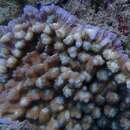Mycedium elephantotus: Brief Summary
(
ranska
)
tarjonnut wikipedia FR
Mycedium elephantotus est une espèce de coraux appartenant à la famille des Merulinidae ou à la famille Pectiniidae.
- lisenssi
- cc-by-sa-3.0
- tekijänoikeus
- Auteurs et éditeurs de Wikipedia
Mycedium elephantotus: Brief Summary
(
vietnam
)
tarjonnut wikipedia VI
Mycedium elephantotus là một loài san hô trong họ Pectiniidae. Loài này được Pallas mô tả khoa học năm 1766.
- lisenssi
- cc-by-sa-3.0
- tekijänoikeus
- Wikipedia tác giả và biên tập viên
Biology
(
englanti
)
tarjonnut World Register of Marine Species
zooxanthellate
van der Land, J. (ed). (2008). UNESCO-IOC Register of Marine Organisms (URMO).
- lisenssi
- cc-by-4.0
- tekijänoikeus
- WoRMS Editorial Board
Description
(
englanti
)
tarjonnut World Register of Marine Species
Colonies occur in particularly attractive shades of green and purple, showing strongly iridescent colours. Usually the centres of calices have a different colour to the greener inter-corallite tissue. The corallites always incline outward, towards the edges of the leaves. Undersides are not spiny. Septo-costae are commonly without spines. Young colonies show a central, large calice and rudimentary peripheral ones and may be confused with Echinopora echinata. This species is found over a broad range of depths on fore- and back reef slopes. It also tolerates well the more sedimented lagoonal habitats where it can resist sedimentation, partly due to a tendency always to grow on vertical faces in such habitats. It may form colonies up to a metre across in sheltered areas, though colonies are usually smaller on fore-reef slopes. (Sheppard, 1998 ) Colonies are laminar or foliaceous. Corallites are nose-shaped, facing outward towards the corallum perimeter. Septa and columellae are well developed and costae form outwardly radiating ribs on the corallum surface which may become highly elaborated on corallite walls. The coenosteum is never pitted at the insertion of new septo-costae. Polyps are extended only at night. Colour: usually a uniform brown, grey, green or pink but may have green or red oral discs and may have a coloured margin around the colony. Abundance: common over a wide range of habitats. (Veron, 1986 ) Similar in colour and growth to Oxypora and Echinophyllia, but corallites clearly face towards the perimeter of the plates. Colonies may be foliaceous. Septo-costae are again evident as striations radiating to the perimeter of the colony. Habitat: diverse reef areas. (Richmond, 1997)
Roux, J.P. (2001) Conspectus of Southern African Pteridophyta. Southern African Botanical Diversity Network Report 13 Page 118 (Includes a picture).
- lisenssi
- cc-by-4.0
- tekijänoikeus
- WoRMS Editorial Board

